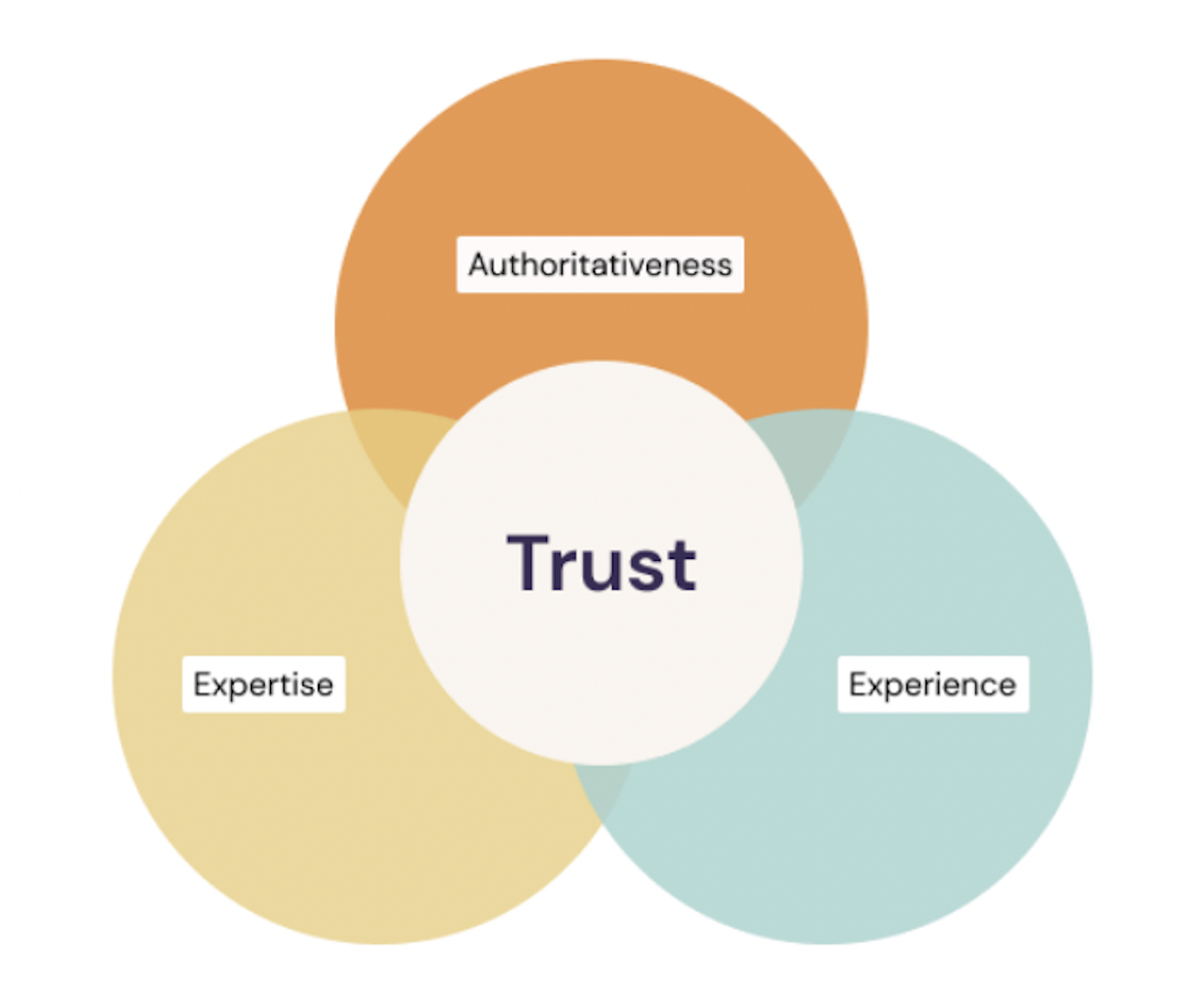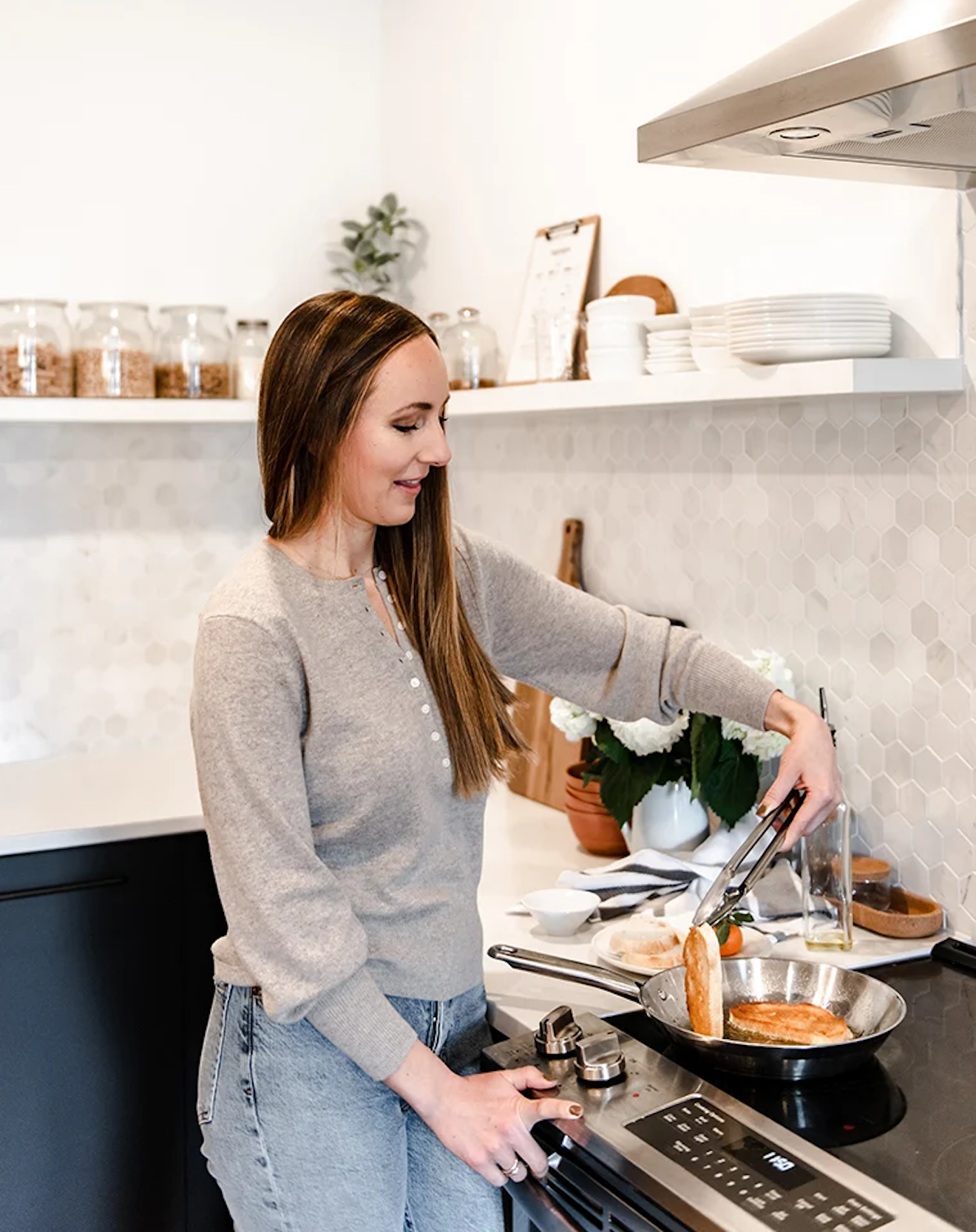If you’re a food blogger, you’ve probably heard SEO Experts emphasize the importance of creating ‘high-quality content.’ But what, exactly, does high-quality content mean? Well… lots of things! But one of the best ways to ensure that you’re consistently creating high-quality content as a food blogger is by aiming for content that exemplifies E-E-A-T, or Experience, Expertise, Authoritativeness, and Trustworthiness.
E-E-A-T is a brainchild of Google (which should get your SEO senses tingling!) and is part of Google’s Search Quality Evaluator Guidelines.
At the end of 2022, Google made a change to how it rates and ranks the quality of content (as part of its Search Quality Rater Guidelines), which influences where that content appears in the Search Engine Results Pages, or SERPS. This change expanded the initial concept of E-A-T, to include another E — Experience.
Creating content that exemplifies E-E-A-T ensures that you’re creating content first and foremost for your readers, that is high-quality (yes, there I said it again!), thorough, and future-proofed.

What is E-E-A-T?
E-E-A-T (or double E-A-T) stands for Experience, Expertise, Authoritativeness, and Trustworthiness. But what does that really mean when it comes to creating content? Let’s break it down:
Experience: Google defines this (relatively) new E as follows: “Does content also demonstrate that it was produced with some degree of experience, such as with actual use of a product, having actually visited a place or communicating what a person experienced?” Think of this as the first-hand, personal, life background, ‘been there done that’ part of the E-E-A-T equation.
Have you been baking for twenty years? Experience ✅ Have you raised three toddlers and have lots of picky eater tips and tricks to share? Experience ✅ Were you diagnosed with Celiac Disease and had to learn how to eat and shop for a gluten-free lifestyle? Experience ✅
Expertise: Do you have the knowledge, skills, education, or training relevant to the content you share? This can take many different forms as a food creator — are you a Registered Dietitian? Did you attend culinary school? Do you have a background as a chef? Let your readers (and Google!) know.
Quick intermission in our definitions to dive a little deeper into the difference between Experience and Expertise in the eyes of Google.
Experience is more personal than Expertise. An Expert in baking might be able to explain the reason why two different chocolate chip cookie recipes produce different results, but if you’ve baked two different chocolate chip cookie recipes, you can tell readers the difference between the two recipes based on your Experience.
Despite their differences, both Expertise and Experience influence the trust a reader has in the content (more on that, later)!
Authoritativeness: In Google’s eyes, Authoritativeness is described as “the extent to which the content creator or the website is known as a go-to source for the topic.” Are you a resource for a certain type of recipe content (think vegan, French patisserie, baby food)? Have you been interviewed by news outlets on that topic? That’s Authoritativeness.
Trustworthiness: Google has told us that “the most important member at the center of the E-E-A-T family is Trust.” Are you sharing honest, safe, and accurate content with your readers? In the food (and particularly the nutrition) space, this is a really important aspect of E-E-A-T. Always make sure that your posts are appropriately cited and researched before sharing any nutrition or health information. (Psst… This is a helpful blog post about staying within your scope if you’re not a Registered Dietitian).

Source: Google
How does E-E-A-T impact SEO?
E-E-A-T is Google’s way of communicating what it considers to be *high-quality content.* While E-E-A-T is not part of Google’s algorithm or a ranking factor, it can still impact the performance of your content in SERPs.
Search Engine Journal put it like this: E-E-A-T is “a guideline Google uses to determine what content is high-quality and should be ranked higher and part of several different aspects of its algorithm. So while it’s not a direct ranking factor, it can have an impact on your overall search rankings indirectly.”
Google explained further that “assessing your own content in terms of [E-E-A-T] criteria may help align it conceptually with the different signals that our automated systems use to rank content.”
So when a human reviewer from Google peruses your site, they’ll be using the E-E-A-T guidelines to evaluate (and potentially reward) content that is determined to be high-quality. Sign us up!
Want to learn more about E-E-A-T?How can food bloggers incorporate E-E-A-T into their content?
It is always a good idea to create content for your food blog with E-E-A-T in mind because, ultimately, it means you’re creating content with your readers in mind. But how, exactly, do you go about doing that? Here are a few simple ideas:
Be meticulous about recipe testing
You know that we’re big advocates for recipe testing here at Food Blogger Pro. Beyond ensuring that you’re sharing foolproof recipes with your readers, it can help establish you as a T
rustworthy content creator and demonstrate your Experience as a recipe developer.
Here are two of our favorite examples of recipe testing in action:
- Handle the Heat’s Ultimate Guide to Chocolate Chip Cookies (Fun fact: this blog post was used in Google’s Search Quality Evaluator Guidelines as an example of ‘Experience.’)
- The Pancake Princess’s No-Bake Cheesecake Bake Off
Include an About Me/Author Bio on your food blog
Including an About Me section in your sidebar as well as an About Me Page (and linking to it in the byline of each recipe) is a great, easy way to convey your Experience and Expertise (and to position yourself as a Trustworthy resource in the food blogging space).
Make sure to include:
- Your educational background
- Relevant work experience
- How many years you’ve been blogging
- Your credentials
- Links to any cookbooks or ebooks you’ve authored
- Links to any news articles or podcasts you’ve been featured in
- A high-quality headshot or photograph of yourself
Alexis Joseph (the food blogger at Hummusapien) has a great example of an About Me page that exemplifies E-E-A-T.
Share evidence of you preparing the recipes or using the products
Odds are, you’re already capturing recipe videos to share on social media or in your blog posts. These videos are also a great way to demonstrate your Experience with the recipe creation process because they usually show you making the recipe!
Want to learn more about the best tools for creating food videos?If you often share links to products you use and like, this is also a good opportunity for you to show yourself using the product. Never forget to explain why you endorse the product, too!

Include structured data on your site
Including structured data throughout your site helps communicate to Google the purpose of your site, and the type of content you share.
Recipe plugins and FAQ blocks are some of the most common examples of structured data on food blogs — use them!
Educate your readers
As you might have guessed from the terms Expert, Authority, and Experience, a big part of the E-E-A-T guidelines is that you are, in fact, serving as an educator in your field. What does that look like for food blogs? Including step-by-step recipe photos or videos to demonstrate how to make your recipe is an easy place to start.
You might also consider creating resources for your readers that can help teach a skill and establish you as an Expert in your niche (in certain cases, this could also serve as cornerstone content on your site). Here are a few examples of educational resources on a food blog:
- Sally’s Baking Recipes: How to Properly Measure Baking Ingredients
- The Perfect Loaf: The Ultimate Sourdough Starter Guide
- Pinch of Yum: How to Cook Salmon
Regularly update and audit your content
It’s important to consistently audit, update, republish, and delete content on your site for many reasons, and the E-E-A-T guidelines are just some of them!
Make sure to audit your older blog posts for accuracy, broken links, and anything that might be inaccurate or out-of-date.
Additional E-E-A-T Resources:
- TopHatRank: For Food Bloggers: What Is E-E-A-T And Why Should I Care?
- Search Engine Journal: Your Guide to Google E-A-T and & SEO
- Amsive: How Google’s Latest ‘Helpful Content System’ Update is Impacting SERPs
And that wraps up our deep dive into E-E-A-T for food blogs! It’s a lot of information, but is a really useful framework to keep in mind as you plan and create content.
We’d love to know… what changes will you make to your site after reading this blog post?!
This is such an insightful post! Your breakdown of E-E-A-T for food blog SEO is incredibly helpful. Thanks for sharing these valuable tips to improve content quality!
Great article! The way you explain E-E-A-T for SEO is so clear and easy to follow. It’s a fantastic resource for food bloggers looking to boost their site’s visibility!